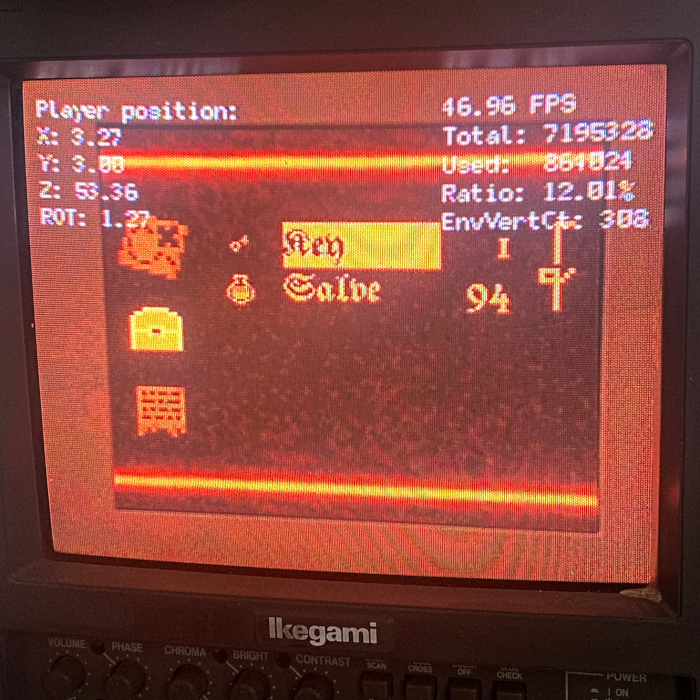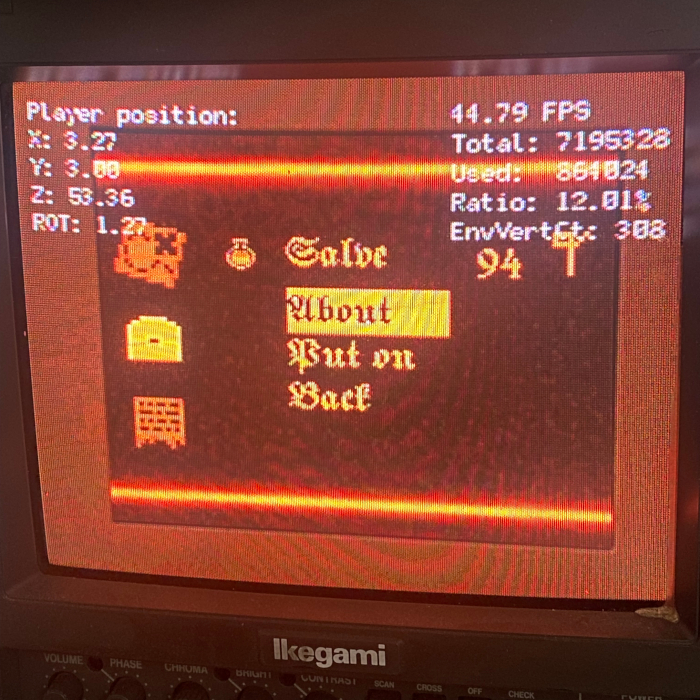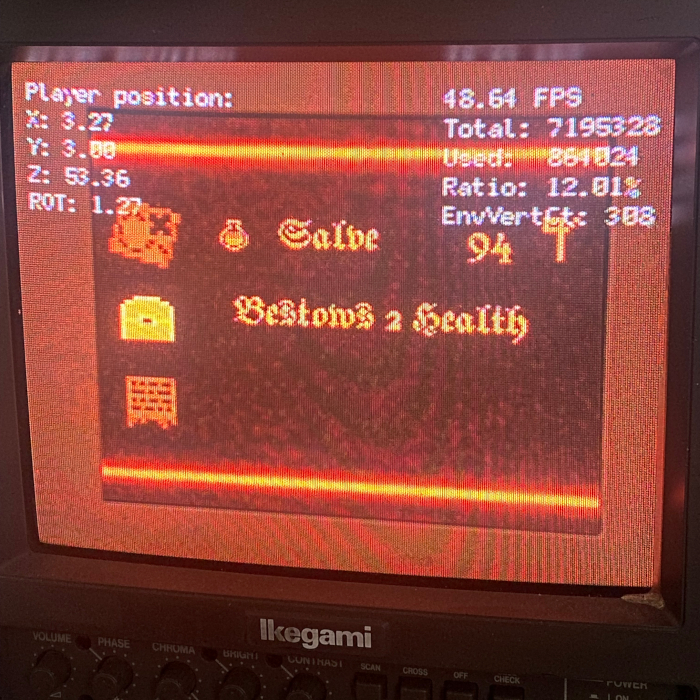this document explains the system i am creating to handle inventory items in my n64 game. throughout the game, the player will encounter and collect
various items such as keys, potions, equipment, quest items, etc. i needed to come up with a way to keep track of which items the player currently has
and how many, and a way to display information about the items and allow the player to use them on the inventory screen in the pause menu. i may expand
the functionality of this system in the future, but for now it is doing what i need it to do. as always, if you notice anything that could be improved,
feel free to contact me.
there are two main objects involved in the inventory system:
- a std::map INVENTORY which keeps track of the quantities of items the player is currently holding
- another std::map ITEM_DICTIONARY which contains all of the information about each item.
the INVENTORY map is part of the player object. it is always active in memory and can be updated any time the player collects, uses, buys, sells or discards
an item. the ITEM_DICTIONARY map only gets built and loaded into memory when the player enters the pause menu. when the player leaves the pause menu it is
deleted again.
i give each type of item an arbitrary id number. this id number is used as the key in the key/value pairs in each std::map object. for example, if the id
number for the potion item type is 57, and the player currently has 4 potions, the key/value pair representing the potions in the player's inventory would
be {57: 4}. each pair being just two numbers, this ensures the data keeping track of the player's inventory is fairly lightweight since it will need to be
in memory at all times while the game is running.
this item id number is also used as the key in the key/value pairs in the ITEM_DICTIONARY std::map object. the values, however, are structs containing
the following data:
- std::string itemName
- std::string itemDescription
- std::string useString
- bool canUse
- bool canDiscard
- sprite_t* itemSprite
- std::function<void()> onUse
when the player enters the pause menu, the game will build the ITEM_DICTIONARY with all of this information for each item in the game. on the inventory screen,
the game will look at all of the items in the player's current INVENTORY, and display a list of them by pulling information from the corresponding items in the
ITEM_DICTIONARY.

inventory screen showing the player has 1 key and 94 salves. the item sprites and names come from the corresponding entries in the ITEM_DICTIONARY. the numbers indicating
quantity come from the player's INVENTORY

this screen shows the options given when the salve item is selected. "put on" is its useString. different items will have different ways to use them such as eat, drink,
open, etc. when this option is selected, the item's onUse function will be called

this screen shows the itemDescription for salve. it is displayed when the "about" option is selected


